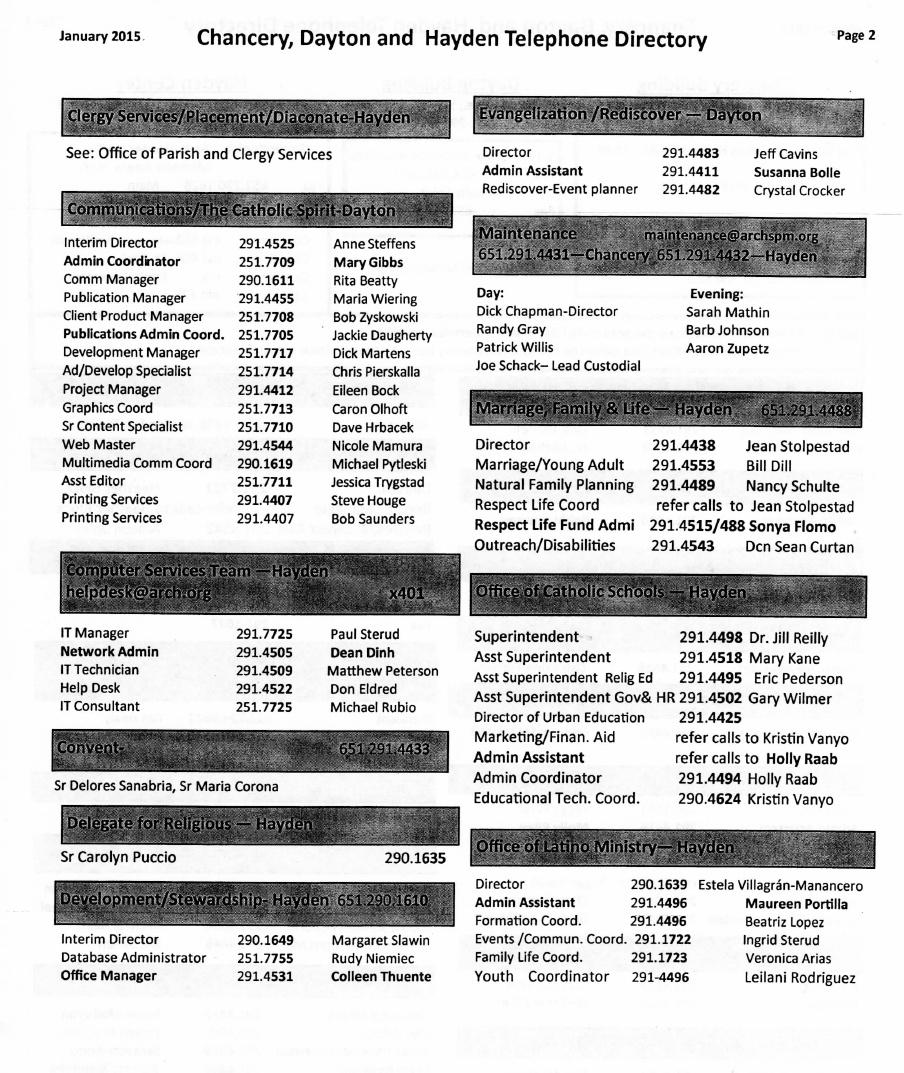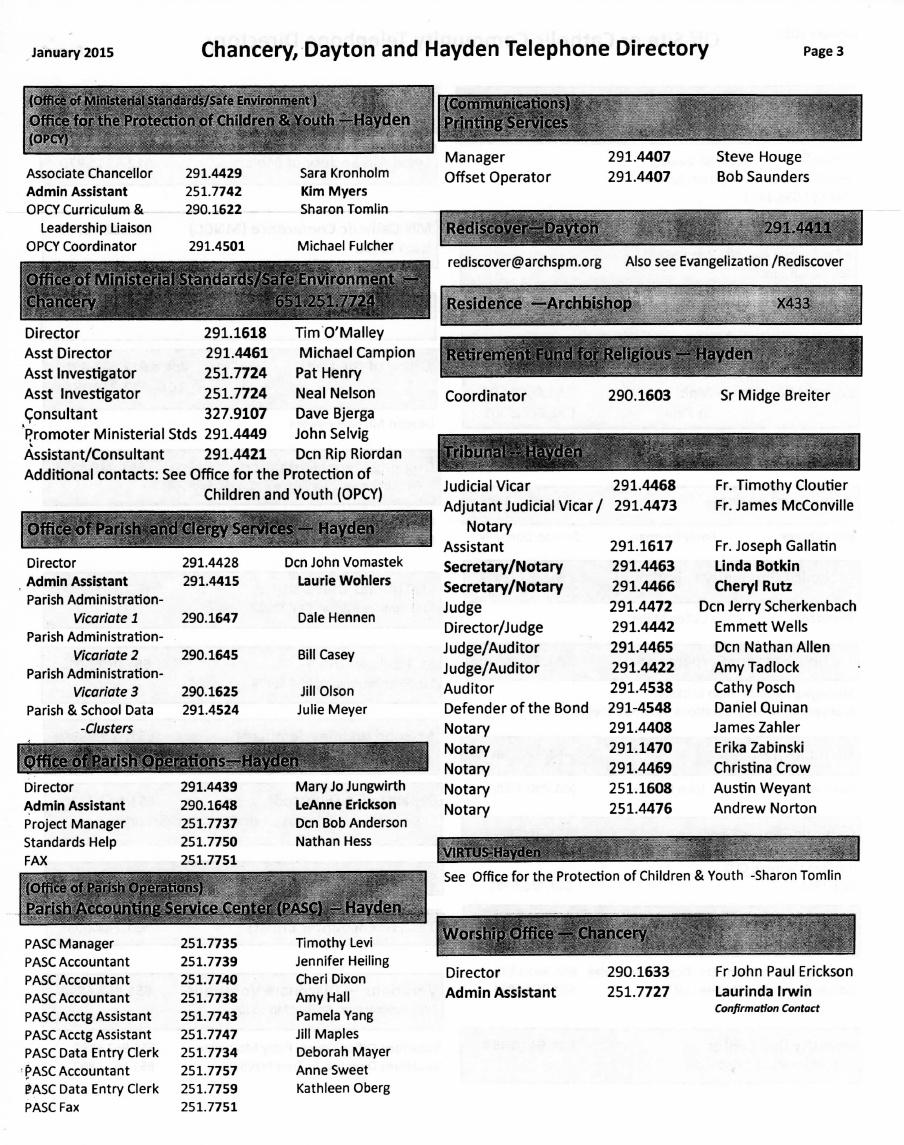|
The 'Whom to Call List'
By Jennifer Haselberger
Canonical Consultation
February 27, 2015
http://canonicalconsultation.com/blog.html
 |
 |
 |
 |
When I worked at the Chancery in the Archdiocese of Saint Paul and Minneapolis, the 'Whom to Call List' was an essential tool for the receptionists (who I supervised) as it helped them determine to whom they should forward the calls that were received via the general Chancery telephone number. From a more theoretical standpoint, the 'list' also outlined the way in which the Archdiocesan administration operated and understood itself. Competencies and areas of responsibility were zealously guarded by some members of staff, and so the accuracy of the list took on an internecine importance far greater than one would otherwise expect.
For that reason I was intrigued when, earlier this month, a copy of the 2015 'Whom to Call List' (also referred to as the 'Directory') appeared in my inbox. Produced in January of 2015, the document provides some insight into how the Central Corporation is restructuring itself in light of the dismal financial condition of the Archdiocese (these are the employees that would be moving should the Archdiocese succeed in selling the Chancery, Hayden, and Dayton buildings). The effects of the layoffs can be seen in the frequent use of 'refer calls to', the reduced staffing of the Marriage Tribunal (increased, as well, by the addition of Father Joseph Gallatin), and in the larger departmental reorganization (there is no longer a Department of Parish Services, for instance).
There is a shift in priorities that is evident as well. While the Department of Worship (an important entity in an Archdiocese, no?) has a staff of two, teh much needed Office for Ongoing Clergy Formation only one, and the Catholic Schools department lists just six employees, there are sixteen employees in the Communications Department and eleven combined for Ministerial Standards and Protection of Children and Youth (including two 'assistant investigators' and a two consultants). On a positive note, the Archdiocese finally has an Office of Latino Ministry, and it is headed by someone who is actually a Latina.
Still, if you consider that this document represents how the Archdiocese actually works and views itself, there are some things that should cause us to pause. For instance, although the fourth page of the document is the list of 'offices that serve the Catholic community but are separate from the Archdiocese' (according to the notes in the document header), the 'independent' Catholic Services Appeal Foundation is listed on page one- as an Archdiocesan office. Also on the first page is the office for Advocacy and Victims Assistance, with a note to refer calls to Deacon Rip Riordan, who apparently has been brought back to work with Ministerial Standards in approximately the same role as he had under Father Kevin McDonough. I don't want to speak for victims, but my general impression is that they would not be happy to have their calls referred to a deacon, especially not when the Archdiocese had publicly announced in December that it was partnering with Canvas Health to improve victims' services, including by establishing a 24 hour hotline (the number for which is not the same as the number given for Rip Riordan).
I am posting the list below, so you can see for yourself. I would also expect that more changes will be forthcoming as the bankruptcy reorganization continues.
|



